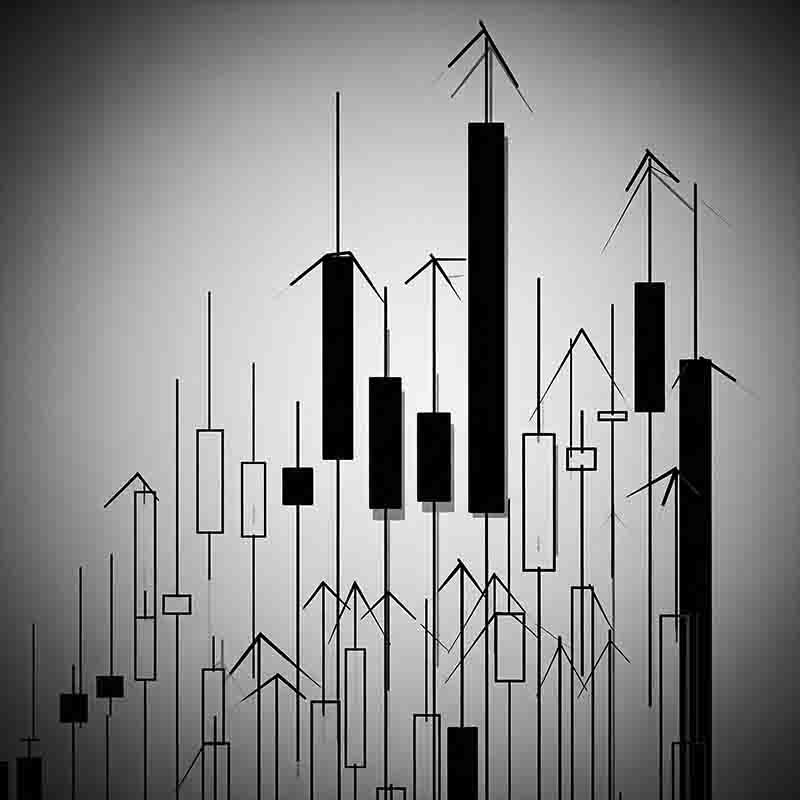 Investment in Photography
Investment in Photography
Photography as an investment offers strong long-term potential, but the market requires careful analysis.
Photography, once viewed as a niche within the broader art market, is drawing heightened interest from investors searching for assets that offer both cultural relevance and financial stability.
The shift reflects a growing belief that photographs, when rare, COA authenticated and historically recognized, can function as credible stores of value in markets unsettled by inflation and volatile equities.
Collectors and advisers point to a set of factors driving this interest.
As photography collectors refine their focus on edition size, historical relevance, scarcity and physical integrity, photography is developing a clearer profile as an alternative asset.
Fine art photography offers low correlation with equities, measurable valuation features, and a strong academic foundation.
However, it also includes opaque private sales, high transaction costs, limited liquidity, and technical factors that require close review.
Strategic Considerations for Investors
A rational investment strategy in fine art photography should incorporate:
-
Acquisition of blue-chip works for stability and long-term preservation of value.
-
Selective exposure to emerging photographers for asymmetrical upside potential.
-
Attention to low edition sizes, impeccable provenance, and strong physical condition.
-
Diversification across print types and period, from early photographic processes to contemporary digital printing.
-
Cost-of-ownership modeling, integrated into expected return calculations.
-
Careful evaluation of digital investment vehicles for compliance and liquidity constraints.
These principles align with market evidence and academic insights from art economics, finance, and cultural studies.
Building a position in the photography art market requires more than visual interest. It requires data, accurate valuation methods, and a clear view of market behavior.
12 key facts about Investment in Photography
-
Edition size drives value: Smaller editions create higher scarcity, which supports stronger long-term price potential.
-
Provenance affects trust and price: Clear ownership records and certificates reduce risk and strengthen resale value.
-
Condition is a major pricing factor: Light damage, fading, or poor storage can lower the value of a print more than in many other art categories.
-
Vintage prints can command premiums: Prints made close to the negative date often carry higher market demand, but only when quality and documentation are strong.
-
Artist reputation shapes market performance: Blue-chip photographers offer more stable pricing, while emerging photographers offer higher risk and potential upside.
-
The market is illiquid: Selling a print may take months, and high transaction fees reduce net returns.
-
Transaction costs are substantial: Buyers must budget for auction premiums, insurance, shipping, and long-term storage.
-
Sales data is incomplete: Many high-value transactions occur privately, which limits the accuracy of price indices and financial modeling.
-
Photography is sensitive to environmental conditions: Proper climate control and archival storage are essential to protect long-term value.
-
Low correlation with stocks can support diversification: Photography may help stabilize a broader investment portfolio but relies on a long holding period.
-
Market manipulation can occur: Dealers may bid on their own artists at auction to maintain price levels, which can distort market signals.
-
Digital tools are reshaping the field: Fractional ownership and blockchain certificates offer new access models, but do not resolve core liquidity challenges.
Investment in Photography: Timeline
| Year |
Milestone |
| 1900–1930 |
Galleries begin to exhibit photography as art, laying early foundations for economic valuation. |
| 1940s–1950s |
Institutional recognition increases demand, establishing photography as a serious art category. |
| 1960s |
Photography begins to be collected more systematically; early price differentials appear between artists. |
| 1970s |
First formal secondary market for photography appears, marking the beginning of real investment potential. |
| 1970s–1980s |
Scarcity becomes quantifiable, allowing more reliable pricing and investment behavior. |
| 1980 |
Auction records create measurable financial signals for investors. |
| 1980s–1990s |
Prices rise for modern and contemporary photographers; early speculation begins. |
| 1997 |
Contemporary photography enters higher price tiers, attracting institutional collectors. |
| 2000–2004 |
Investors gain broader visibility into pricing, though transparency remains limited. |
| 2006 |
Photography joins the upper tier of the art market, confirming its potential as an alternative asset. |
| 2008 |
Photography prices soften but prove more stable than some contemporary art segments, strengthening its diversification appeal. |
| 2010–2015 |
Market confidence improves; demand rises for both modern and contemporary prints. |
| 2015–2020 |
Market broadens geographically; investment activity rises in Asia and the Middle East. |
| 2021 |
New ownership models emerge; investors explore blockchain-based documentation and fractional ownership. |
| 2022–2024 |
Investors face higher compliance requirements; provenance verification improves. |
| Present |
Investors rely on edition size, provenance, condition, artist status, and auction history to guide acquisition and long-term strategy. |
Investors study the photography market, compare artists, and review sales data to understand how prints gain or lose value.
Photography supports Diversification
 Collecting photography as an Investment
Collecting photography as an Investment
Repeat sales models, the standard method for studying art returns, are especially challenging in photography because individual prints appear at auction far less frequently than paintings or sculptures.
Why Photography Attracts Investors
Photography has gained attention as an alternative asset because it offers clear markers of rarity and value.
Although historically viewed as secondary to painting and sculpture, it has matured into a defined asset category with measurable value drivers, recognizable risk factors, and a growing institutional infrastructure.
Its investment case rests on scarcity created through editioning, the cultural and historical authority of specific artists, and its comparatively low correlation with conventional asset classes.
Historical and Structural Foundations
The market for photo art began to expand meaningfully in the 1970s, when cultural shifts in visual literacy, driven by magazines, mass media, and academic recognition, redefined photography as a primary artistic medium.
This shift produced a new class of collectors, many of whom sought works that reflected contemporary visual experience more directly than painting.
The defining structural mechanism of the market is artificial scarcity.
Because a photograph is reproducible, its value depends heavily on edition size.
Market consensus, reflected in the documents you provided, indicates that editions above 10 prints reduce exclusivity and dampen long-term price potential.
Limited editions effectively substitute for the “uniqueness” of a painting and thus anchor photography within the same economic framework as other fine art assets.
The market remains segmented across four major price bands, from low-cost decorative works to high-value blue-chip prints.
Only the upper segments (above €10,000) exhibit investment-grade behavior, as they are tied to established artists, museum involvement, and a track record of secondary market sales.
Edition Size and Scarcity
Edition size is the core variable in photography valuation.
Smaller editions (5–10 prints) create supply constraints that mirror the economics of unique works.
Collectors rely on edition numbers to assess long-term appreciation potential.
Oversized editions dilute scarcity and raise concerns about whether prices will be sustainable.
Provenance and Documentation
Provenance is a major determinant of market confidence.
Documentation confirms authenticity, establishes ownership history, and reduces transaction risk. Well documented works, especially those linked to museum collections, obtain substantial valuation premiums.
Uncertain provenance, inconsistent numbering, or ambiguous printing dates introduce price penalties that can exceed those found in painting markets, because multiple prints of the same image may circulate with varying legitimacy.
Vintage Prints and Temporal Proximity
Vintage prints, defined as prints produced close to the date of the negative, are favored for their historical specificity and their closer ties to the artist’s direct creative process.
However, a vintage status does not universally guarantee higher value.
The case of Ansel Adams illustrates that early prints may be technically inferior, leading later, artist, or estate-supervised prints to command stronger prices.
Vintage premiums thus depend on print quality, production method, scarcity and market consensus rather than age alone.
Artist Reputation and Market Status
Artist reputation functions as a proxy for both cultural relevance and financial security. The market distinguishes between:
-
Blue-chip photographers, who maintain long-term demand, strong auction histories, and institutional backing
-
Emerging photographers, whose prices are more volatile and influenced by short-term visibility, social media, and curatorial interest.
Blue-chip works behave similarly to large-cap equities: lower volatility, slower appreciation, but higher stability.
Emerging artists resemble high-growth assets: potentially strong upside but greater risk due to informational uncertainty and market speculation.
Correlation and Diversification Benefits
Photography exhibits low correlation with equities and bonds.
This increases its value as a diversifying asset, especially during periods of equity market stress.
However, diversification benefits apply mainly to works with established price histories.
Illiquidity and Transaction Costs
The photography market is illiquid. Sales cycles may span months, years or decades.
Selling relies on intermediaries such as galleries, private dealers and auction houses, each charging commissions that materially reduce net returns.
Investors must also consider insurance, storage, transportation, and conservation costs, which function as negative carry.
Because transaction costs are high and market frequency is low, photography aligns with long-term “buy-and-hold” investment strategies rather than short-term trading.
Data Scarcity and Index Construction
Reliable price indices are difficult to build.
Many high-value sales occur privately, and repeat sales for the same print are rare.
Scholars therefore use hedonic pricing models that weigh print type, edition size, artist reputation, and condition to estimate fair value.
This methodological challenge restricts econometric accuracy and increases reliance on qualitative assessments by advisors and appraisers.
Market Manipulation and Artificial Price Signals
Photography, with lower volume and fewer transactions than painting, is especially susceptible to distortions.
Investors must distinguish genuine demand from strategic behavior.
Physical Vulnerability
Photographic prints are sensitive to light, temperature, humidity, and chemical instability.
Fading or discoloration can sharply reduce value.
Preservation costs, therefore, should be treated as integral to the asset’s financial profile.
Speculative Bubbles in Emerging Markets
Segments driven by new collectors, especially in Asia, show rapid growth but heightened volatility.
Emerging artists and digital-native buyers can create short-term surges that may not translate into sustained long-term appreciation.
NFTs and Royalties
Digital photography and NFTs introduce programmable scarcity and transparent ownership through blockchain technology.
Smart contracts allow automatic royalties on secondary sales, which shifts value accrual mechanisms in favor of artists.
Tokenization of Physical Prints
Platforms offering fractional ownership (e.g., through “art shares”) seek to reduce entry costs and improve liquidity.
Yet the core illiquidity of the underlying print remains.
Fractional markets may trade more frequently, but they depend on regulatory compliance and investor trust in custodial arrangements.
Regulatory Challenges
Tokenization raises legal questions about securities classification, disclosure requirements, and enforceability of digital ownership.
Regulators in major jurisdictions, including the EU and U.S., are still developing frameworks to manage these structures. Investors must consider legal risk alongside market risk.
Conclusion
Photography presents a structured yet nuanced investment category shaped by controlled scarcity, market signaling, historical relevance, and material fragility.
Its financial properties, low correlation with traditional assets, long holding periods, and high transaction costs, position it as an alternative asset suited to informed, patient investors.
Investment in fine art photography appeals to collectors and investors who want an asset that mixes cultural interest with measurable financial value.
Investment in Photography: FAQ
It refers to purchasing photographic prints with the goal of long-term value growth based on rarity, artist reputation, and documented market demand.
Edition size determines scarcity. Smaller editions, often fewer than ten prints, support higher price potential because fewer copies circulate in the market.
Provenance confirms authenticity and establishes ownership history. A print with clear documentation generally sells faster and at higher prices.
Condition affects both immediate value and long-term resale potential. Fading, dents, or surface marks reduce demand and can significantly lower the price.
A vintage print is produced close to the date the negative was made. These prints often carry higher demand due to historical context and artistic relevance, assuming quality is strong.
Yes. Blue-chip photographers have established auction records and museum support, which generally makes their prints more stable than those by emerging artists.
The market is illiquid. Selling a print may require months of waiting, and transaction costs, such as commissions and fees, reduce overall returns.
Auction data is public, but many high-value sales occur privately. This makes complete price indexing difficult and requires investors to rely on both quantitative and qualitative research.
Key risks include illiquidity, market volatility, storage and insurance costs, uncertain provenance, and potential market manipulation by dealers.
Platforms offering fractional ownership and blockchain certificates aim to increase transparency and accessibility. These tools help verify ownership but do not remove the slow resale cycle that defines the market.


